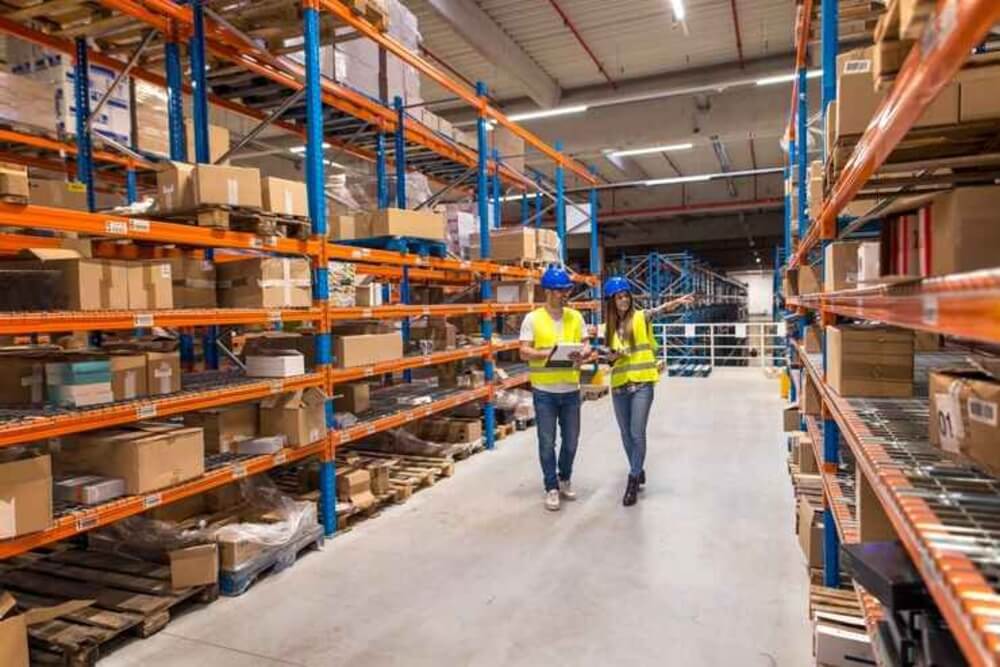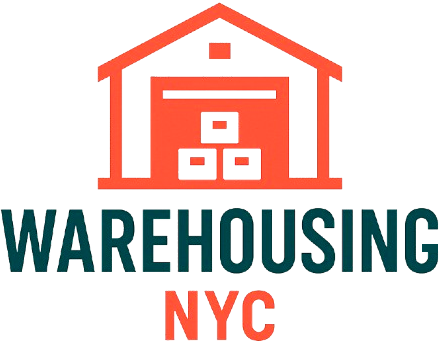Efficient warehouse storage is crucial for businesses aiming to optimize space, enhance accessibility, and maintain organized inventory systems. Selecting the appropriate storage solution, whether pallet racking or shelving, depends on factors such as load capacity, retrieval frequency, and warehouse layout. Here are the distinctions, benefits, and ideal applications of each system, providing insights to help businesses make informed decisions.
Table of Contents
Key Takeaways✔ Businesses handling large quantities of inventory should opt for pallet racking to maximize vertical space, streamline bulk storage, and enhance retrieval efficiency with forklifts. ✔ Warehouses dealing with smaller, frequently accessed products benefit from shelving, which allows for easy manual retrieval, better organization, and efficient use of limited space. ✔ Combining pallet racking and shelving provides the best of both worlds, optimizing space while accommodating both bulk goods and small inventory, ensuring operational flexibility and scalability. |

What Are Warehouse Storage Systems?
Warehouse storage systems are essential for systematically organizing goods within a facility, ensuring optimal space utilization and smooth operational flow. By implementing the right storage system, businesses can enhance productivity, reduce retrieval times, and improve overall inventory control. These systems are tailored to accommodate different types of inventory, from small, hand-loaded items to bulk palletized goods. Choosing the right system is vital for:
Maximizing Space Utilization
Efficiently using available vertical and horizontal space allows businesses to store more products without expanding their warehouse footprint. The surge in e-commerce has been a major driver for the warehousing sector, with general warehousing and storage commanding approximately 54% of the total market share in 2024. As online shopping continues to grow, businesses need optimized warehouse storage solutions to handle increasing inventory demands. Proper storage configurations, such as high-density racking or mezzanine shelving, help maximize every inch of available space while maintaining accessibility.
Enhancing Accessibility
A well-organized storage system ensures quick and easy access to inventory, reducing the time spent locating and retrieving items. Optimized accessibility improves workflow efficiency, particularly in facilities that require fast order fulfillment, such as distribution services in NYC.
Improving Inventory Management
Organized storage reduces the risk of misplaced or lost items, enhancing order accuracy and reducing errors in shipment processing. Modern New York warehouse solutions integrate inventory tracking systems, such as barcode scanning and RFID technology, to monitor stock levels and prevent overstocking or stockouts.
What is Pallet Racking?
Pallet racking is a high-density warehouse storage solution designed to efficiently store and organize palletized goods. It maximizes both vertical and horizontal space, making it ideal for businesses with high-volume inventory. This system improves operational efficiency by allowing bulk storage while ensuring accessibility through specialized rack designs. Pallet racking is widely used in New York warehouse solutions due to its adaptability to various industry needs, from retail and e-commerce to manufacturing and distribution services in NYC.
Key Components of Pallet Racking
A pallet racking system consists of several crucial structural elements that ensure stability, durability, and ease of use:
- Uprights: Vertical steel frames that provide support and form the backbone of the system. They determine the height capacity of the racks and can be adjusted for varying storage needs.
- Beams: Horizontal load-bearing bars that connect uprights and support the weight of the pallets. Their strength and placement determine the load capacity of each level.
- Wire Decking: Metal mesh panels placed across beams to create a flat storage surface. This feature improves safety by preventing items from falling through gaps while allowing for proper airflow, which is particularly important in temperature-sensitive warehouse storage environments.
These components work together to create a strong and adaptable storage infrastructure suitable for distribution services in NYC that require heavy-load storage solutions.
Common Types of Pallet Racking Systems
Pallet racking systems come in various designs, each serving a specific function depending on inventory size, product turnover, and accessibility requirements. Some of the most common types include:
Selective Pallet Racking
This offers direct access to each pallet without moving others, making it ideal for businesses with diverse product inventories. Frequently used in warehouses with cross-docking services in NYC where rapid access to stored products is essential. It can be configured as single-deep or double-deep to balance storage density and accessibility.
Drive-In/Drive-Through Racking
Designed for high-density storage where forklifts can enter the racking system to load and unload pallets. This is best suited for handling large quantities of homogeneous products. Drive-in racks follow a last-in, first-out (LIFO) system, while drive-through racks allow for first-in, first-out (FIFO) inventory movement.
Push-Back Racking
Uses a system of nested carts that slide on inclined rails, allowing multiple pallet storage in depth. When a new pallet is loaded, it pushes the previous one back, and when removed, the next pallet automatically moves forward. It is ideal for businesses requiring a balance between selectivity and high-density New York warehouse solutions.
Pallet Flow Racking
Incorporates gravity-driven rollers that facilitate the automatic movement of pallets from the loading side to the unloading side. It follows a FIFO inventory system, making it a preferred choice for warehouses storing perishable goods or products with expiration dates. It enhances efficiency for high-throughput operations such as food and beverage distribution, pharmaceuticals, and eCommerce fulfillment centers.

What is Shelving?
Shelving systems are a versatile and cost-effective warehouse storage solution designed for smaller, non-palletized items. Unlike pallet racking, shelving is intended for hand-loaded products, making it ideal for warehouses, retail stockrooms, and businesses with frequent manual inventory access. Shelving systems are essential in New York warehouse solutions where space optimization and efficient product retrieval are priorities.
These systems cater to various industries, including e-commerce, pharmaceuticals, automotive parts distribution, and general retail. Many distribution services in NYC rely on shelving for organizing small to medium-sized products that need frequent picking and restocking.
Key Benefits of Shelving in Warehouse Storage
- Maximized Accessibility: Since items are stored at hand level, employees can quickly retrieve goods without the need for forklifts or heavy machinery.
- Space Optimization: Shelving can be customized to fit compact storage areas, making it suitable for facilities with limited floor space.
- Flexibility in Storage Configurations: Many shelving types are adjustable, allowing businesses to modify shelf heights and layouts as inventory changes.
- Ideal for Fast-Moving Goods: Unlike pallet racking, which prioritizes bulk storage, shelving is excellent for high-turnover items that require constant replenishment.
- Enhanced Organization: Helps categorize items neatly, reducing errors and improving picking efficiency—especially crucial for cross-docking services in NYC, where speed is essential.
Types of Shelving Systems
Warehouses and distribution centers use different shelving systems depending on product type, accessibility needs, and available space. The most common types include:
Boltless Shelving (Rivet Shelving)
Designed for easy assembly without the need for bolts, nuts, or special tools. It is highly adjustable, allowing for quick reconfiguration as inventory needs change. It is suitable for a wide range of products, from office supplies to warehouse parts and frequently used in distribution services in NYC due to its cost-effectiveness and adaptability.
Wire Shelving
Constructed with open wire decks, enhancing airflow and visibility. This is ideal for environments requiring cleanliness, such as pharmaceutical storage and food distribution. It minimizes dust accumulation and improves light penetration, making it easier to locate stored items and commonly found in New York warehouse solutions where hygiene and product visibility are key factors.
Mobile Shelving
Mounted on tracks or rolling carriages, allowing users to compact or expand shelving units as needed. It maximizes space efficiency by eliminating unused aisle space when shelves are not in use. Often used in high-density storage environments where floor space is at a premium and particularly useful in cross-docking services in NYC, where quick inventory access is required for fast-moving goods.
Industrial Steel Shelving
Built with heavy-duty steel frames to support heavier loads. It is designed for durability, making it ideal for warehouses handling tools, machine parts, and industrial components. Typically used in manufacturing facilities, repair shops, and bulk storage areas within New York warehouse solutions.
Key Differences Between Pallet Racking and Shelving
Understanding the distinctions between pallet racking and shelving is essential for selecting the appropriate system:
Feature | Pallet Racking | Shelving |
Load Capacity | High; designed to support heavy, palletized goods. | Lower; intended for lighter, hand-loaded items. |
Space Utilization | Maximizes vertical space, ideal for warehouses with high ceilings. | More compact, suitable for smaller items and limited spaces. |
Accessibility | Requires equipment like forklifts for loading and unloading. | Easily accessible by personnel without specialized equipment. |
Best For | Bulk storage, large inventories, and high turnover products. | Small parts, tools, retail backrooms, and items requiring frequent access. |
How to Choose the Best Storage Solution for Your Warehouse Needs
Selecting the right warehouse storage system is critical for maximizing efficiency, minimizing costs, and ensuring seamless operations. Whether a business requires pallet racking, shelving, or a combination of both, the decision depends on inventory type, handling methods, and warehouse layout.
Several key considerations influence the choice of a storage system, including product volume, accessibility requirements, scalability, and budget constraints. For companies utilizing distribution services in NYC, an optimized storage system ensures streamlined logistics, reduced retrieval times, and improved order fulfillment.
1. For High-Volume Storage: Pallet Racking
Pallet racking is the preferred solution for businesses with large-scale inventory needs and high turnover rates. This system is best suited for warehouses that:
- Store bulk goods or palletized products: Businesses handling large shipments or manufacturing components benefit from pallet racking’s vertical storage capabilities.
- Require forklift access for material handling: Pallet racking is designed to accommodate forklifts for easy loading and unloading.
- Need to optimize cubic storage space: Warehouses using New York warehouse solutions can maximize their storage capacity by utilizing multi-level pallet racking.
- Operate within industries such as retail, automotive, food distribution, and logistics: Pallet racking is commonly used in facilities handling high-demand goods, including eCommerce fulfillment centers and cross-docking services in NYC.
When to Choose Pallet Racking
- Businesses with high inventory turnover requiring efficient storage and retrieval.
- Warehouses that need to store large quantities of the same or similar products.
- Facilities with high ceilings and sufficient space to accommodate vertical racking systems.
- Companies looking to integrate automation and conveyor systems for rapid processing.
2. For Small, Hand-Loaded Items: Shelving
Shelving is an effective storage solution for businesses dealing with smaller, manually handled items. It is commonly used in industries such as pharmaceuticals, retail stockrooms, spare parts distribution, and document storage. This system is ideal for:
- Warehouses with frequent picking and restocking needs: Shelving enables employees to retrieve products quickly, improving efficiency.
- Businesses handling lightweight inventory that does not require forklifts: Many distribution services in NYC use shelving for small package fulfillment and order processing.
- Environments that require organized and compartmentalized storage: Shelving systems keep products systematically arranged, reducing misplacements and improving inventory accuracy.
- Operations that prioritize accessibility and ergonomics: Unlike pallet racking, shelving ensures that workers can access items without additional lifting equipment.
When to Choose Shelving
- Businesses dealing with small, fast-moving inventory.
- Warehouses requiring frequent stock rotation and easy access to products.
- Storage areas where employees manually pick and pack orders without machinery.
- Organizations with limited space but requiring an organized warehouse storage system.
3. For Hybrid Storage Needs: A Combination of Pallet Racking and Shelving
Many warehouses benefit from a hybrid storage system that integrates both pallet racking and shelving. This approach provides:
- The flexibility to store bulk and small items within the same facility: Businesses utilizing New York warehouse solutions can optimize space by designating areas for both large palletized goods and small, easily accessible inventory.
- Improved workflow efficiency: Combining both systems ensures that high-turnover items are stored on shelves for quick picking, while bulk inventory remains organized on racks.
- Better inventory segmentation: Shelving is used for smaller, frequently accessed products, while pallet racking stores backstock and wholesale quantities.
- Scalability for growing businesses: A hybrid system can be adjusted as warehouse operations expand or inventory changes over time.
When to Choose a Hybrid Storage System
- Businesses with a diverse inventory that includes both bulk and small items.
- Warehouses implementing cross-docking services in NYC, requiring a mix of high-density storage and easy-access solutions.
- Facilities needing a balance between selectivity and storage density.
- Companies looking for adaptable warehouse storage solutions that can scale with future growth.
Why Partner with a 3PL Company for Reliable Storage
Collaborating with a third-party logistics (3PL) provider offers businesses a strategic advantage in managing their supply chain operations. The 3PL market is projected to expand at a compound annual growth rate (CAGR) of 8.1% between 2024 and 2030, highlighting the increasing reliance on outsourced warehousing and distribution services. As supply chains become more complex, 3PL providers play a crucial role in ensuring cost-efficient and scalable storage solutions.
Advantages of 3PL Storage Solutions
Access to Optimized Warehouse Space
3PL providers offer state-of-the-art warehouse facilities, eliminating the need for significant infrastructure investments. These facilities are strategically located near key hubs and landmarks, such as ports and airports, ensuring seamless logistics connections.
Professional Inventory Management
Utilizing advanced tracking systems, 3PLs ensure accurate and efficient inventory control. This includes real-time updates and optimized stock levels, preventing disruptions in the supply chain.
Scalability and Flexibility
3PL providers allow businesses to scale their storage needs up or down based on demand, ensuring cost efficiency and operational agility. This flexibility is crucial for adapting to market fluctuations and seasonal variations.
How to Choose the Right 3PL Partner
Selecting a 3PL provider requires careful evaluation of the following factors:
Industry Experience
A well-established provider with experience handling logistics and warehousing operations ensures seamless storage and distribution. For instance, 3PL Logistics by Best supports industries across the tri-state area with strategic access to key hubs.
Technology and Inventory Tracking
Look for a 3PL that utilizes modern inventory management systems, such as real-time tracking and automated stock replenishment. Advanced technology ensures seamless logistics operations and full visibility across the supply chain.
Strategic Location
The location of the warehouse should be accessible and close to major distribution hubs to minimize transit times. Proximity to key hubs like ports and airports ensures seamless logistics connections.
Range of Services
Opt for a provider offering comprehensive services, including warehousing, transportation management, and distribution. Comprehensive 3PL services streamline operations and reduce costs.
Customer Support and Reliability
Choose a company known for excellent customer service, reliable operations, and consistent communication. A customer-focused approach ensures that logistics solutions are tailored to meet the unique needs of every business.
Frequently Asked Questions
How do 3PL providers enhance warehouse storage efficiency?
3PL providers optimize warehouse storage by designing efficient layouts and implementing advanced inventory management systems to reduce wasted space. They use real-time tracking and automated solutions to streamline stock handling and retrieval processes. This ensures businesses can maximize storage capacity while maintaining fast and accurate order fulfillment.
Can partnering with a 3PL provider help manage seasonal inventory fluctuations?
Yes, 3PL providers offer scalable storage solutions that allow businesses to adjust warehouse space based on seasonal demand changes. They provide flexible warehousing contracts, ensuring companies only pay for the storage they need. This adaptability helps businesses avoid overstocking during slow seasons and efficiently handle peak sales periods.
What role does technology play in 3PL warehouse storage solutions?
3PL providers use warehouse management systems (WMS), RFID tracking, and AI-driven analytics to enhance inventory accuracy and efficiency. These technologies provide real-time visibility into stock levels, reducing errors and improving order processing speeds. By automating key operations, 3PLs help businesses minimize labor costs and optimize overall warehouse performance.
How do 3PL providers ensure the security of stored goods?
Reputable 3PL warehouse storage providers implement security measures such as 24/7 surveillance, restricted access zones, and regular inventory audits. Many also use climate-controlled facilities and fire suppression systems to protect sensitive goods. By maintaining strict security protocols, they help businesses prevent theft, damage, and compliance issues.
What types of businesses can benefit from 3PL warehouse storage solutions?
Retail, e-commerce, manufacturing, and distribution companies benefit from 3PL warehouse storage by outsourcing logistics to experts. Businesses that experience fluctuating inventory levels, rapid growth, or complex supply chains find 3PL services particularly valuable. By leveraging a 3PL provider, companies can reduce overhead costs and focus on core business operations.
Partner with 3PL Logistics By Best for Reliable Warehouse Storage in New York City!
Choosing the right warehouse storage solution is essential for maximizing efficiency, reducing costs, and ensuring seamless logistics operations. Whether your business requires pallet racking, shelving, or a combination of both, working with a trusted 3PL provider ensures that your inventory is managed with precision and care. 3PL Logistics By Best, located in New York City, offers industry-leading New York warehouse solutions tailored to meet your storage and distribution needs. Our advanced tracking technology, flexible storage options, and dedicated customer support ensure businesses in New York City can optimize their supply chain with ease. No matter your industry, partnering with 3PL Logistics By Best guarantees efficient warehouse storage and streamlined distribution services in NYC.
Contact 3PL Logistics By Best today to discover how our New York warehouse solutions can help you scale operations, improve inventory control, and enhance order fulfillment!

